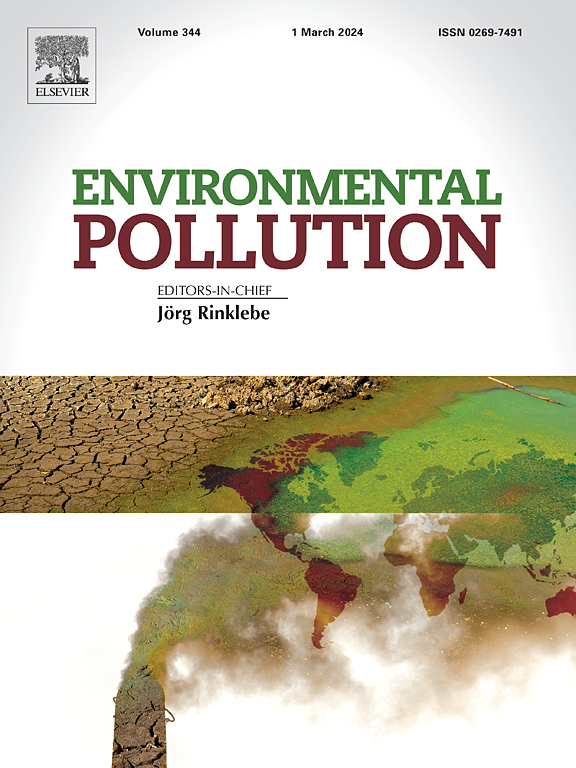微塑料运输及其对河口氮循环和N2O排放的影响
IF 7.6
2区 环境科学与生态学
Q1 ENVIRONMENTAL SCIENCES
引用次数: 0
摘要
河口生态系统中的微塑料污染破坏了氮循环,增加了一氧化二氮(N2O)的排放,强化了河口作为温室气体(GHG)热点的作用。这篇综述整合了调节微塑料诱导的氮循环过程中断和改变河口生物地球化学的机制。它阐明了微塑性动力学影响微生物氮转化和改变温室气体通量的关键机制途径。微塑料通过多种机制影响氮循环,包括氮化合物的吸附、微生物群落的重组和控制氮转化的酶促过程的调节。在塑料球生物膜内,微塑料促进微生物相互作用,促进不完全反硝化和硝化器驱动的N2O生产,增强河口沉积物和水域的N2O通量。本文综合了近年来在微塑性降解、遗传漂变和水平基因转移方面的研究成果,这些研究成果可能会随着时间的推移进一步重塑氮循环能力。微塑性表征的最新进展,包括基于适配体的传感器、流式细胞术和改进的提取方法,增强了量化和追踪河口环境中微塑性影响的能力。本文提出了微塑料介导的河口N2O排放放大的综合概念模型,并确定了关键的研究和政策方向。解决微塑料引起的氮循环和温室气体动力学中断问题需要综合缓解战略、有针对性的监管干预和跨学科研究,以支持可持续的河口管理。本文章由计算机程序翻译,如有差异,请以英文原文为准。


Microplastics transport and impact on nitrogen cycling and N2O emissions in estuaries
Microplastic pollution in estuarine ecosystems disrupts nitrogen cycling and enhances nitrous oxide (N2O) emissions, reinforcing the role of estuaries as greenhouse gas (GHG) hotspots. This review integrates mechanisms that modulate microplastic-induced disruptions to nitrogen cycling processes and transform estuarine biogeochemistry. It elucidates key mechanistic pathways whereby microplastic dynamics influence microbial nitrogen transformations and alter GHG fluxes. Microplastics affect nitrogen cycling through multiple mechanisms, including adsorption of nitrogenous compounds, restructuring of microbial communities, and modulation of enzymatic processes that control nitrogen transformations. Within plastisphere biofilms, microplastics foster microbial interactions that promote incomplete denitrification and nitrifier-driven N2O production, intensifying N2O fluxes from estuarine sediments and waters. The review synthesizes recent findings on microplastic degradation, genetic drift, and horizontal gene transfer, which may further reshape nitrogen cycling capacity over time. Recent advancements in microplastic characterization, including aptamer-based sensors, flow cytometry, and improved extraction methods, enhance the ability to quantify and trace microplastic impacts in estuarine environments. This review proposes an integrative conceptual model for microplastic-mediated amplification of N2O emissions in estuaries and identifies critical research and policy directions. Addressing microplastic-induced disruptions of nitrogen cycling and GHG dynamics will require integrated mitigation strategies, targeted regulatory interventions, and interdisciplinary research to support sustainable estuarine management.
求助全文
通过发布文献求助,成功后即可免费获取论文全文。
去求助
来源期刊

Environmental Pollution
环境科学-环境科学
CiteScore
16.00
自引率
6.70%
发文量
2082
审稿时长
2.9 months
期刊介绍:
Environmental Pollution is an international peer-reviewed journal that publishes high-quality research papers and review articles covering all aspects of environmental pollution and its impacts on ecosystems and human health.
Subject areas include, but are not limited to:
• Sources and occurrences of pollutants that are clearly defined and measured in environmental compartments, food and food-related items, and human bodies;
• Interlinks between contaminant exposure and biological, ecological, and human health effects, including those of climate change;
• Contaminants of emerging concerns (including but not limited to antibiotic resistant microorganisms or genes, microplastics/nanoplastics, electronic wastes, light, and noise) and/or their biological, ecological, or human health effects;
• Laboratory and field studies on the remediation/mitigation of environmental pollution via new techniques and with clear links to biological, ecological, or human health effects;
• Modeling of pollution processes, patterns, or trends that is of clear environmental and/or human health interest;
• New techniques that measure and examine environmental occurrences, transport, behavior, and effects of pollutants within the environment or the laboratory, provided that they can be clearly used to address problems within regional or global environmental compartments.
 求助内容:
求助内容: 应助结果提醒方式:
应助结果提醒方式:


